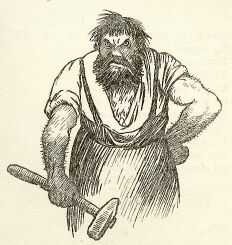Gibbons is an Irish and English surname of Norman origin. The surname was first found in the counties of Limerick and Mayo, in which two distinct families arose shortly after the Norman invasion of Ireland during the 12th century.
William Allen may refer to:

Limburg-Hohenlimburg was a county in Germany in the Middle Ages.
Isenberg was a County of medieval Germany. It was a partition of the county of Altena and was annexed to Limburg(Lenne) in 1242.

Count Frederick of Isenberg was a German noble, the younger son of Arnold of Altena. Before the split between Arnold of Altena-Isenberg the eldest and his brother Friedrich Altena-Mark the younger son of Everhard von Berg-Altena. His family castle was the Isenberg near Hattingen, Germany.

Hagen-Hohenlimburg, on the Lenne river, is a borough of the city of Hagen in North Rhine-Westphalia, Germany.
John Marshall (1755–1835) was Chief Justice of the United States.
The surname Duff has several origins. In some cases, it is an Anglicised form of the Gaelic Ó Duibh, Mac Giolla Duibh, Mac Duibh. The surname Duff is also sometimes a short form of Duffin, and MacElduff, and Duffy.

Dietrich I was the last count of Isenberg and Altena, the first count of Limburg, son of Friedrich II of Isenberg, count of Isenberg and Altena.

Johann of Isenberg-Limburg of Limburg, son of Dietrich I of Isenberg. was a German aristocrat. He married Agnes von Wildenberg; they had three children:
Dietrich II of Isenberg-Limburg was a German aristocrat. In deeds and charters known as Dietrich (II) of Limburg-Stirum, he was lord of Stirum and the son of Johann of Isenberg-Limburg, who died in 1277. He should not be confused with Diederik II count of Limburg Hohenlimburg or Dietrich III count of Limburg Hohenlimburg and lord of Broich (±1328-18.05.1401), who actually ruled the county Limburg (Lenne).

The House of Limburg-Stirum, which adopted its name in the 12th century from the immediate county of Limburg an der Lenne in what is now Germany, is one of the oldest families in Europe. It is the eldest and only surviving branch of the House of Berg, which was among the most powerful dynasties in the region of the lower Rhine during the Middle Ages. Some historians link them to an even older dynasty, the Ezzonen, going back to the 9th century.

Noah is an English masculine given name derived from the Biblical figure Noah (נחַ) in Hebrew. It is most likely of Hebrew in origin from the root word "nuach”/“nuakh”, meaning rest. Another explanation says that it is derived from the Hebrew root meaning "to comfort" (nahum) with the final consonant dropped.
James Wells may refer to:
Dietrich II may refer to:
Snyder is an Anglicized occupational surname derived from Dutch Snijder "tailor", related to modern Dutch Snijders and Sneijder. It may also be an Anglicized spelling of the German Schneider or Swiss German Schnyder, which both carry the same meaning. A less common Anglicized spelling of the Dutch Snijder is Snider.
Zimmerman is a surname variant of the German Zimmermann, meaning "carpenter". The modern German terms for carpenter are Zimmerer, Tischler, or Schreiner, but Zimmermann is still used. It is also commonly associated with Ashkenazi Jews.

Eisner or Eissner is a surname. Notable people with the name include:

The house of Limburg Hohenlimburg took its name in the 12th century from the county of Limburg on the river Lenne in today's Germany. After Diederick of Isenberg had claimed part of the former property of his father Frederik of Isenberg with the help of uncle Duke Hendrik of Limburg, he built the Hohenlimburg castle on the river Lenne. At fifty years of age, his third son Everhart, closest descendant of the original holder, succeeded him in the county. Mentioned count, in original kept charters, since 1276 together with his father. It was clear that the future male-line primogeniture was granted. Everhard is the ancestor of the family branch of the counts of Limburg Hohenlimburg and Broich. His first brother Henry died young and second Johan (1247-1277), died at the age of thirty, left three children. Johan is the ancestor of the house Lords of Limburg Stirum. The Counts of Limburg Hohenlimburg and Broich were not count by name with a late 17th century certified title but actually ruled the county of Limburg-Lenne since the 13th century, until the first quarter of the 16th century. The last count Johan (1464-1511) who had no descendants of his own. None of his only two male relatives, cousins Diederick and Adolf of Limburg, sons of his former godfather Johan of Limburg (1421-1472), had inheritance rights, as explained below. To prevent the family of his former wife Von Neuenahr from taking the county, Count Johan adopted his cousin Irmgard of Sayn at her marriage to Winrich of Daun. She and her husband inherited the county.
This page is based on this
Wikipedia article Text is available under the
CC BY-SA 4.0 license; additional terms may apply.
Images, videos and audio are available under their respective licenses.







